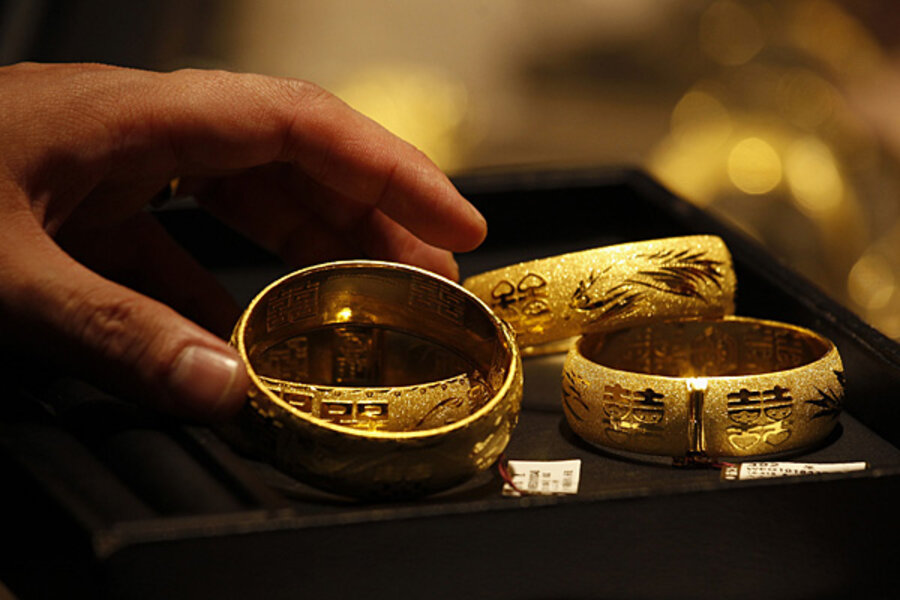Gold prices fall as dollar strengthens
Loading...
Gold fell 1 percent on Monday, extending last week's 7 percent decline, hurt by a stronger dollar amid worries over an early end to the U.S. Federal Reserve's stimulus programme.
The metal fell closer to a three-year low on investor pessimism following the sharp sell-off last week, triggered when the Fed said it would cut back its monetary easing by mid-2014.
Spot gold lost 1.2 percent to $1,281.60 an ounce by 1212 GMT after its worst weekly performance last week since September 2011 pushed the price as low as $1,268.89. It is down 24 percent so far this year.
Comex gold futures for August delivery fell $11.20 to $1,280.80 an ounce.
"We have now come below the $1,300 level as people increasingly price in that massively aggressive easing is a thing of the past," Danske Bank analyst Christin Tuxen said.
"This is a fairly quiet week, with not much in the calendar, but with the dollar and U.S. Treasuries yields stronger, we see gold remaining under pressure."
The dollar traded near its highest in over two weeks against a basket of currencies, bolstered by expectations theFed was considering scaling back its $85 billion monthly bond purchases.
The Fed's remarks helped push up the benchmark 10-year U.S. Treasury yield to its highest in almost two years at above 2.5 percent.
Given that gold pays no interest, the rise in returns from U.S. bonds and other markets is seen as a negative signal.
Gold was also hurt as interest rates for short-term funds in China rose to extraordinary levels last week after big commercial banks held back on lending in the interbank market.
"The main problem for gold is the current lack of investment interest," Credit Suisse analysts wrote in a note. "The $1,300 mark is a key level to watch, and a sustained break to the downside would worsen the technical picture."
INVESTORS SLASH BULLISH BETS
Hedge funds and money managers slashed their bullish bets in gold futures and options for a second consecutive week to the lowest level in a month, a report by the Commodity Futures Trading Commission showed.
Holdings in SPDR Gold Trust, the world's largest gold-backed exchange-traded fund, fell a further 0.54 percent to 989.94 tonnes on Friday, the lowest in over four years.
Physical demand was muted in the world's top two gold consumers, India and China, unlike mid-April when the drop in gold prices attracted a rush for the metal, pushing up premiums and tightening supplies.
Silver fell 2.2 percent to $19.66 an ounce, having reached a near-three year low of $19.35 last week.
Investment bank UBS lowered its 2013 outlook for silver to $24 an ounce from $29 previously, saying it would be hit as sentiment towards gold sours and silver has no drivers of its own.
Platinum fell 1.6 percent to $1,353.75 an ounce and palladium was down 0.2 percent to $672 an ounce. (Additional reporting by A. Ananthalakshmi in Singapore; Editing by Jane Baird)







